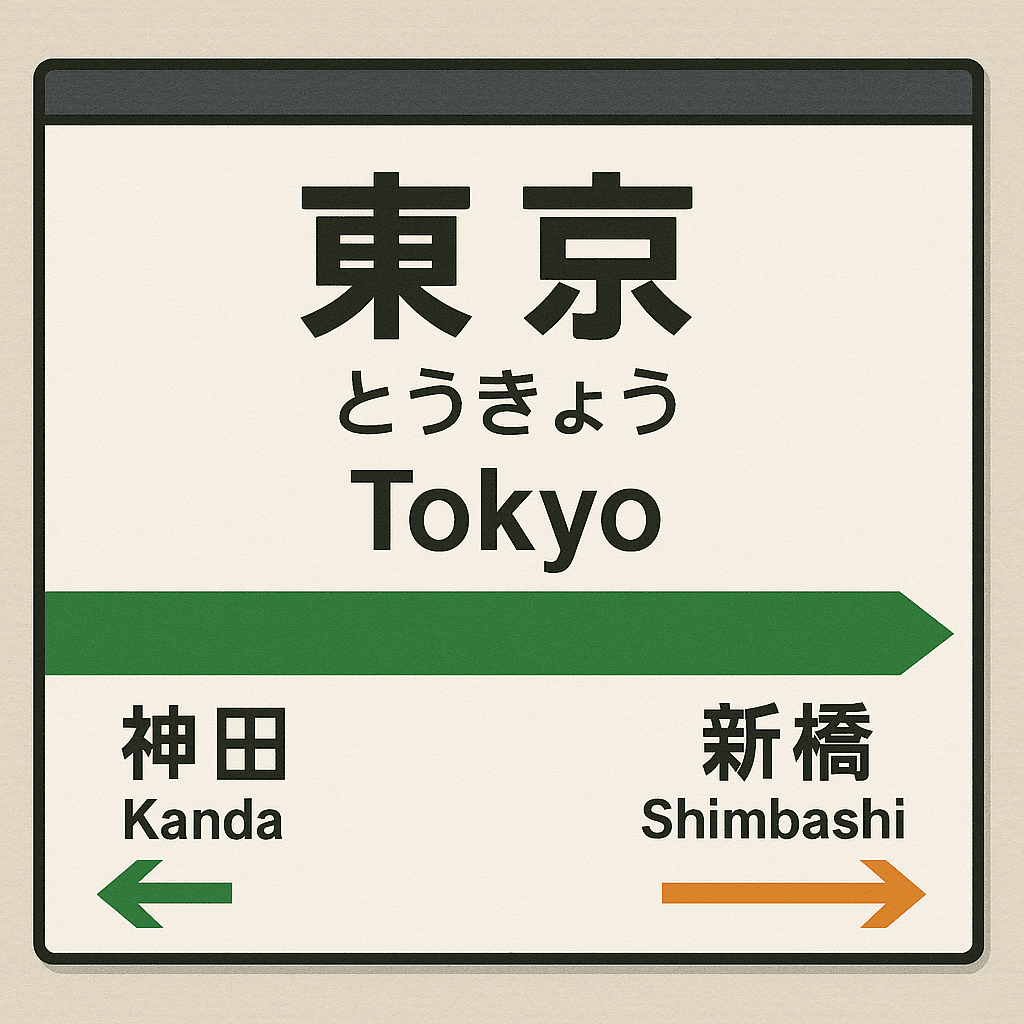Japanese Hiragana Mystery: Why “shi”, “chi”, and “tsu” Break the Pattern? | For JLPT N5 Learners
1. 昔(むかし)は「si」「ti」「tu」だった
1. They were originally pronounced “si”, “ti”, and “tu”
奈良時代(ならじだい)や平安時代(へいあんじだい)のころの日本語(にほんご)では、
「し」は「si」、「ち」は「ti」、「つ」は「tu」という発音(はつおん)でした。
つまり、「sa-si-su-se-so」や「ta-ti-tu-te-to」のように、規則的(きそくてき)な並(なら)びだったと考(かんが)えられています。
In the Japanese language of the Nara and Heian periods,
“shi”, “chi”, and “tsu” were originally pronounced as “si”, “ti”, and “tu”.
So the rows were thought to be regular like “sa-si-su-se-so” and “ta-ti-tu-te-to”.
2. 発音(はつおん)が自然(しぜん)に変化(へんか)した
2. Their pronunciation changed naturally over time
「し(si)」の「s」の音(おと)は、母音(ぼいん)「i」の影響(えいきょう)で、「sh」のような音(おと)(/ɕi/)に変(か)わりました。
「ち(ti)」も「チャ音(おん)」(/tɕi/)に、「つ(tu)」は「tsu」のような音(おと)に変化(へんか)しました。
The “s” sound in “si” changed to something closer to “sh” (/ɕi/) due to the influence of the vowel “i”.
Similarly, “ti” changed to a “chi”-like sound (/tɕi/), and “tu” became “tsu”.
3. 音(おと)に合(あ)わせてローマ字(じ)も変(か)わった
3. The romanized spellings were changed to match the pronunciation
もし昔(むかし)のまま「si」「ti」「tu」と書(か)いてしまうと、今(いま)の本当(ほんとう)の発音(はつおん)とは違(ちが)ってしまいます。
そのため、現代(げんだい)では「shi」「chi」「tsu」と書(か)くのが自然(しぜん)です。
If we kept writing “si”, “ti”, and “tu” today, it wouldn’t match how we actually pronounce them.
That’s why we now write them as “shi”, “chi”, and “tsu” in romanized Japanese.
発音(はつおん)の変化(へんか)がローマ字(ろーまじ)にも影響(えいきょう)? ヘボン式(しき) vs 訓令式(くんれいしき)
Did changes in pronunciation affect romanization too? Hepburn vs Kunrei
ヘボン式ローマ字とは?
What is Hepburn romanization?
ヘボン式ローマ字(ろーまじ)は、アメリカ人(あめりかじん)宣教師(せんきょうし)のジェームス・カーティス・ヘボンによって考案(こうあん)されました。
日本語(にほんご)の発音(はつおん)に近(ちか)い表記(ひょうき)方法(ほうほう)で、「し」は「shi」、「ち」は「chi」、「つ」は「tsu」と書(か)きます。
The Hepburn romanization system was devised by James Curtis Hepburn, an American missionary.
It represents Japanese pronunciation more closely, so “し” is written as “shi”, “ち” as “chi”, and “つ” as “tsu”.
例(れい):
- し → shi
- ち → chi
- つ → tsu
訓令式ローマ字とは?
What is Kunrei romanization?
訓令式ローマ字(くんれいしきろーまじ)は、日本の小学校(しょうがっこう)でのローマ字教育(きょういく)や、パソコンのタイピングなどでよく使(つか)われています。
発音(はつおん)よりも、仮名(かな)の並(なら)びに基(もと)づいた規則的(きそくてき)な表記(ひょうき)方法(ほうほう)です。
そのため、「し」は「si」、「ち」は「ti」、「つ」は「tu」と書(か)きます。
Kunrei romanization is often taught in Japanese elementary schools and used in typing on computers.
It is a systematic method based on the kana order rather than pronunciation.
Therefore, “し” is written as “si”, “ち” as “ti”, and “つ” as “tu”.
例(れい):
- し → si
- ち → ti
- つ → tu
どちらを使(つか)うべき?
Which one should you use?
発音(はつおん)に近(ちか)い表記をしたい場合はヘボン式(しき)が便利(べんり)です。
タイピングをする場合(ばあい)は訓令式(くんれいしき)が便利(べんり)です。
日本語(にほんご)を勉強(べんきょう)する人(ひと)にはヘボン式(しき)がよく使(つか)われています。
外国(がいこく)から来(き)た観光客(かんこうきゃく)も、ヘボン式(しき)のローマ字(じ)をよく見(み)かけます。
Hepburn is convenient if you want a romanization close to the actual pronunciation.
When typing on a computer, the Kunreishiki system is convenient.
People who study Japanese often use the Hepburn system.
Tourists from other countries also often see the Hepburn romanization.
街(まち)でよく目(め)にするローマ字の例(ヘボン式と訓令式)
Examples of Romanization Commonly Seen in Town (Hepburn vs Kunrei)
| 日本語(にほんご) | ヘボン式(Hepburn) | 訓令式(Kunrei) | English Meaning |
|---|---|---|---|
| 東京(とうきょう) | Tokyo | Toukyou | Japan’s capital city |
| 京都(きょうと) | Kyoto | Kyouto | Famous historical city |
| 新幹線(しんかんせん) | Shinkansen | Sinkansen | Bullet train |
| 出口(でぐち) | Deguchi | Deguti | Exit |
| 入り口(いりぐち) | Iriguchi | Iriguti | Entrance |
| 自動販売機(じどうはんばいき) | Jidōhanbaiki | Zidouhanbaiki | Vending machine |
| トイレ | Toire | Toire | Toilet / Restroom |
| 空港(くうこう) | Kūkō | Kuukou | Airport |
まとめ
Summary
日本語(にほんご)の「し」「ち」「つ」は、昔(むかし)は「si」「ti」「tu」と発音(はつおん)されていましたが、
時代(じだい)が進(すす)むにつれて、今(いま)の「shi」「chi」「tsu」のような発音(はつおん)に変(か)わりました。
それに合わせて、ローマ字(ろーまじ)の書(か)き方(かた)も変(か)わり、
現代(げんだい)では、発音(はつおん)に近(ちか)いヘボン式(しき)と、仮名(かな)の並(なら)びに基(もと)づいた訓令式(くんれいしき)の2つが使(つか)われています。
ヘボン式(しき)は、日本語(にほんご)の発音(はつおん)をローマ字(じ)で自然(しぜん)に伝(つた)えることができるため、
外国人観光客(がいこくじんかんこうきゃく)や日本語学習者(にほんごがくしゅうしゃ)に広(ひろ)く使(つか)われています。
一方(いっぽう)、訓令式(くんれいしき)はタイピングや教育(きょういく)の場面(ばめん)で使(つか)われています。
それぞれの特徴(とくちょう)を知(し)って、場面(ばめん)に合(あ)わせて使(つか)い分(わ)けられるといいですね!
In old Japanese, “shi”, “chi”, and “tsu” were pronounced as “si”, “ti”, and “tu”.
Over time, their pronunciation changed to the current “shi”, “chi”, and “tsu”.
As a result, the way we write them in romanized form also changed.
Today, there are two main systems: Hepburn, which reflects actual pronunciation, and Kunrei, which follows the kana order more strictly.
Hepburn is widely used among foreign tourists and Japanese learners, as it better matches how the words sound.
Kunrei, on the other hand, is often used in typing and school education.
It’s helpful to understand both systems and choose the one that fits the situation!

